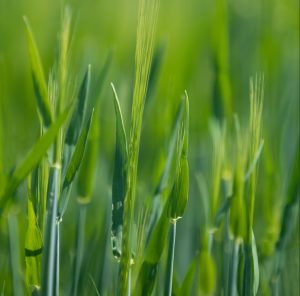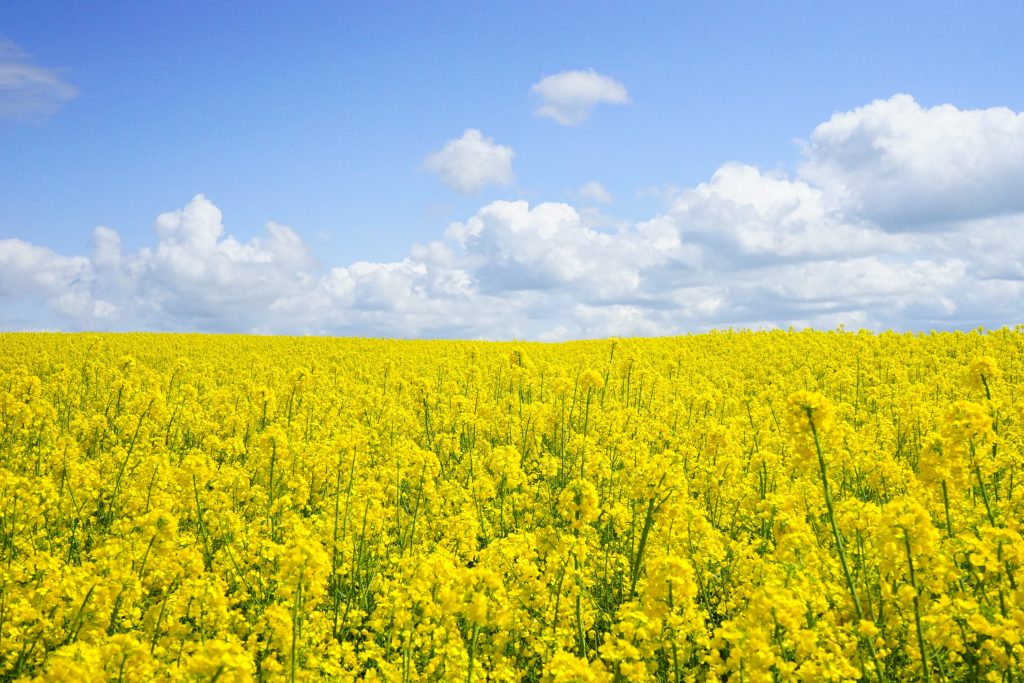Agriculture
Agriculture provides food for society, and production must be efficient. In crop production, it is important to choose suitable crops adapted to the growing conditions to get a good harvest. Crop rotation has always been important and nowadays catch crops are complementary crops that can improve the soil and keep the land vegetated all year round. Fertilization is a natural part of cultivation. Analysis is a good way to determine how much to fertilize and when.

Agricultural analysis
Marking ring
AL analysis
The AL analysis (Read more) shows the amount of phosphorus, potassium, calcium and magnesium available in the next few years in the soil's nutrient supply. The soil pH and K/Mg ratio are also given. For phosphorus and potassium, the class is given, which is a way of categorizing the levels of these substances in the soil, and it is often used as a basis for fertilization. Clay and loam soils hold more phosphorus and potassium, while sandy soils have lower levels. Use AL analysis as a basis for supply fertilization and liming according to the Swedish Board of Agriculture's "Recommendations for fertilization and liming".
Along with AL analysis, it is common to analyze some other minerals. Particularly poor soils often have boron deficiencies, while loamy soils retain copper. Boron is analyzed by the so-called boron hot water method. If you want to know the supply of plant nutrients in the longer term, you choose HCl analysis. The mineral particles are then boiled with hydrochloric acid to obtain a stronger extraction of the plant nutrients, especially phosphorus, potassium and copper. The content of cadmium is perhaps most interesting in connection with the addition of digested sludge and is then analyzed by boiling with nitric acid.
We also offer help with drawing the map. Contact us and we will tell you more.

Stop guessing, measure!
Water analysis
A water analysis (read more) with optional Alkalinity of the water mixed in spray solutions will help you find out how much acid is needed in your mixture. See the table.
Alkalinity is a measure of the pH buffering capacity of water.
Analysis during the growing season
Once cultivation has begun, it is important to check the nutrient levels in the soil and the balance of plant nutrients. It is also important to keep an eye on the pH of the soil, as a low or too high pH can affect the growth of plants and their ability to absorb nutrients.
Laneway
Spurway analysis (read more) shows the amount of plant nutrients available in the soil for the plants in the coming weeks/months. By continuously monitoring a crop with analysis every four weeks (depending on the crop), nutrient deficiencies can be addressed in time by supplementary fertilization. To obtain a basis for basic fertilization, samples are taken during winter/spring. Samples taken just before fertilization in the spring provide a current value of mineralized nitrogen (N-Min). Spurway analysis is also an excellent method for assessing whether it is time for liming.
Optional Micro: copper, zinc and molybdenum. It should always be chosen in case of suspected deficiencies or if you have new soil that you do not know.
Plant juice analysis
Plant sap analysis (read more) gives the best answer to how good the nutrient uptake of different substances is. Send samples for sap analysis before each planned spraying so you can get the right plant nutrients in the sprayer. Foliar fertilization is great for providing extra plant nutrition, mainly phosphorus and micronutrients. In case of suspected deficiencies, the plant sap analysis cannot tell you how much is in the soil. Add a soil sample to the spurway analysis at the same time, so the results are easier to interpret and the right conclusions can be drawn.
Leaf analysis
Leaf analysis (read more ) should not be confused with plant sap analysis. It measures the total plant nutrient content of the leaves including that which has been fixed in proteins, DNA, cell walls etc. It does not show the actual nutrient deficiencies as early and we therefore rather recommend plant sap analysis for foliar fertilization purposes. Leaf analysis is mainly used to compare the nutrient status from year to year in perennial crops.
Other analyses
The soil's moisture content can change over the years, depending on tillage and the amount of crop residues left in the field. Soil fertility and the potential crop yield are very important. It binds plant nutrients in a similar way to clay and is therefore also important for plant nutrient storage. Using grassland in crop rotation is a powerful way to sequester more carbon in the soil profile. In the era of climate change, carbon sequestration is important and soil fertility is one measure of this. Even better is to measure the actual content of organic carbon (TOC. Total Organic Carbon).
We also offer a Garden Package with spurway analysis, soil content and sieve curve. The sieve curve shows the amount of clay, silt and sand in different fractions and gives you knowledge about the properties of the soil. A clay soil holds a lot of nutrients while a sandy soil cannot hold as much. This may force you to divide the fertilizer application into two or three applications. Clay and topsoil content affect how much lime can be applied at one time. The grain size distribution also affects soil structure, drying, bearing capacity, etc.

